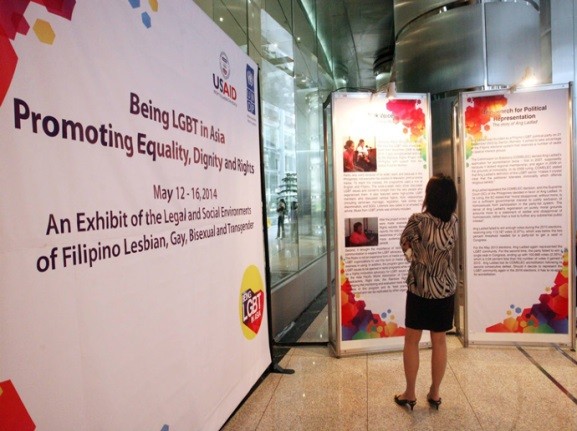
Feb. 2015—Reports can convey a compelling story—like the eight comprehensive country studies under USAID’s “Being LGBT in Asia” initiative. The studies are designed to learn about and engage lesbian, gay, bisexual and transgender (LGBT) people across Asia, developing a better understanding of their lives as well as deriving recommendations for further development assistance activities.
Conducted through national dialogues and interviews among LGBT communities—including over 650 LGBT people and 220 LGBT organizations—the initiative highlights the Asian LGBT experience and raises awareness about USAID’s LGBT rights and development policies.
The reports highlight important trends and lessons about LGBT life. On the promising side, Vietnam has seen sweeping changes in the acknowledgement of LGBT rights in recent years, including dozens of television shows and interviews in the media with LGBT people, culminating in a parliamentary vote on same-sex marriage, although the measure did not pass.
Thailand is genuinely friendly in many ways, and openly welcomes LGBT tourists. But LGBT people in Thailand face strong pressure to be “good citizens” and put family concerns before their own, a pressure that is similar in Cambodia.
The Philippines report paints a mixed picture, with high levels of basic social tolerance and acceptance, and even LGBT political parties. At the same time, there is widespread friction with the Roman Catholic Church and the country’s Muslim communities.
Other countries face deeper challenges. Basic social acceptance of LGBT people is lacking in most of Indonesia. Ultra-nationalist gangs have taken to violent repression of LGBT people in Mongolia. In China, being LGBT is challenging, with the country’s cultural focus on family. In some cases, LGBT people enter traditional marriages and have children against their will to fulfill social requirements.
Nepal is widely lauded for a 2007 Supreme Court ruling that annulled laws containing discrimination against sexual minorities, but being LGBT in Nepal is difficult because of the country’s poverty, continuing political crisis and powerfully entrenched patriarchal values. Brunei, Burma, Malaysia and Singapore continue to criminalize LGBT status, a position the United States opposes.
“Being LGBT in Asia” country reports are available online for Cambodia, China, Indonesia, Mongolia, Nepal, the Philippines, Thailand and Vietnam, and reports are in both English and the associated local language.
In addition to country-level reports, USAID reached out to LGBT communities across Asia using social media, websites and crowd-sourced videos. USAID also recently released its LGBT Vision for Action, a strong stand on developing an inclusive environment for all LGBT people.
Since the beginning of the initiative—a partnership between USAID and the United Nations Development Programme (UNDP) that ran from 2012 through 2014—U.S. ambassadors across Asia have held receptions to reach out to and recognize LGBT people. More recently, “Being LGBT in Asia” has garnered broader support that includes the White House, U.N. Secretary General Ban Ki-moon and UNDP Administrator Helen Clark.
As President Barack Obama has said: “The struggle to end discrimination against lesbian, gay, bisexual and transgender persons is a global challenge, and one that is central to the United States’ commitment to promoting human rights.”
LINKS
Follow @USAIDAsia, on Facebook, on Flickr, on YouTube







Comment
Make a general inquiry or suggest an improvement.